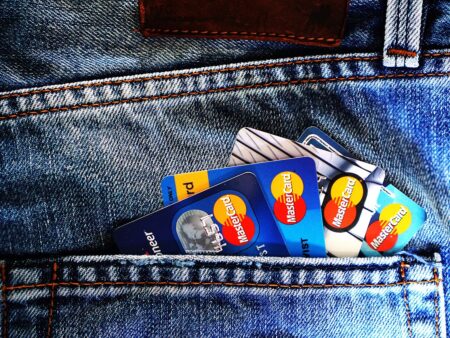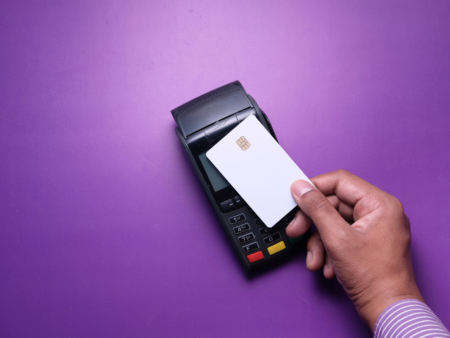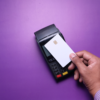Discover how advancements in technology have revolutionized payment methods, with the introduction of digital wallets and contactless payments.
In recent years, there has been a significant change in how we make payments. The way we pay for products and services has changed as a result of the introduction of digital wallets and contactless payment methods due to technological improvements. While transforming the current payment landscape, these new payment solutions offer convenience, security, and effectiveness. In this article, we’ll examine how contactless payments and digital wallets are transforming how we handle our finances.
Digital wallets, usually referred to as e-wallets or mobile wallets, are becoming more popular among consumers. Customers can safely save payment information on their smartphones or other digital devices thanks to these wallets. Users can link their credit or debit cards to make purchases both online and in physical stores. The benefit of digital wallets is their capacity to do away with the requirement for physical cards, resulting in a quick and simple payment experience.
The capability to accept contactless payments is one of the main advantages of digital wallets. Consumers can make purchases using contactless payment methods like Near Field Communication (NFC) technology by simply touching or waving their smartphones or smartwatches close to a compatible payment terminal. As a result, the payment procedure is quicker and more effective because there is no need to swipe cards or enter PINs. Additionally, contactless payments have become increasingly popular as a result of enhanced security features like tokenization and biometric verification, which safeguard user data and lower the risk of fraud.
There are several benefits for both customers and businesses as a result of the widespread use of digital wallets and contactless payment systems. Let’s examine a few of these benefits:
Comfort and simplicity of use
Digital wallets offer a straightforward and user-friendly payment process. Users no longer need to carry numerous physical cards because they can save multiple payment options in a single wallet. Whether they are purchasing in-store or online, users may complete purchases fast and easily with a few touches on their smartphones.
Improved Security – Digital wallets employ higher levels of security to safeguard user information. Due to features like tokenization, in which distinct tokens replace sensitive card data, and biometric identification, such as fingerprint or face recognition, digital wallets offer higher security than conventional payment methods. Users can execute transactions with confidence thanks to this.
Contactless payments that are hygienic – Particularly since the COVID-19 pandemic, contactless payments have gained popularity. Because there is no physical touch with the payment terminals, contactless payments offer a hygienic and secure payment option. The popularity of contactless payment methods has accelerated as customers place a higher priority on health and safety.
Simple Internet Shopping – Digital wallets have improved the convenience of online shopping. Thanks to autofill capability and saved payment information, users can complete online purchases with only a few clicks, eliminating the need to manually enter card information for each transaction. While buying online, this streamlined approach reduces friction and saves time.
Many digital wallets include rewards and loyalty programs, enabling users to accumulate and redeem points or discounts in real time. By connecting their wallets to various shops or brands, users may take advantage of personalized discounts and incentives, enhancing their shopping experience and fostering brand loyalty.
Tools for Financial Management
Users of digital wallets have access to information about their spending patterns, transaction history, and budgeting ability thanks to built-in financial management features. These tools help users keep track of their expenditures, set spending limits, and improve their understanding of their financial situation. Customers are able to manage their money better and make more informed financial decisions as a result.
From a business perspective, the introduction of digital wallets and contactless payments has several advantages:
Customer Experience Is Improved – Businesses may provide their customers a smooth and convenient payment experience by accepting digital wallets and contactless payments. Customers appreciate transactions that are swift and convenient, which can increase their happiness and loyalty.
Customers may complete their transactions much more quickly with contactless payments. This can help businesses, especially during peak hours, cut down on lines and wait times, improving operational effectiveness and customer flow.
You can cut costs on handling cash and running standard payment terminals by allowing digital wallets and contactless payments. Additionally, businesses might profit from lower transaction fees compared to conventional payment methods, particularly for internet purchases.
Customer Data Access – Organizations can access crucial client information through digital wallets, such as transaction history and spending patterns. With the help of this data, marketers may better understand consumer behavior, tailor their promotional campaigns, and design specialized loyalty programs.
Biometric payments: the next stage of evolution?
Biometric payments are a new frontier in payment innovation that is emerging as technology develops. The potential to completely transform the payments industry is thrilling because to biometric authentication, which is based on distinctive physical or behavioral characteristics.
Biometric payments’ prospective benefits
A safer and more practical replacement for conventional authentication techniques is provided by biometric payments. Biometric technology offers a highly accurate and individualized method of identifying by using distinctive physical or behavioral qualities, such as fingerprints, facial recognition, voice recognition, or even iris scans. Why biometric payments might be a logical step after digital wallets is explained here:
Enhanced security: Biometric authentication gives payment transactions an additional layer of protection. Biometric features are distinctive and difficult to fabricate, unlike PINs or passwords that can be lost, stolen, or easily copied. Users can feel secure when making payments thanks to the much lower risk of identity theft and fraudulent transactions.
Biometrics eliminate the need for cards, passwords, and PINs, making checkout easier. Scan or recognize biometrics to authorize payments quickly. This frictionless experience makes transactions more efficient for customers and enterprises.
Biometric payments personalize user experience. Each person’s biometrics enable customised payment. Biometric data may be combined with other user data like purchase history or preference to provide personalized offers, discounts, or rewards. Personalization can boost customer loyalty.
Biometric use applications could go beyond payments. They can be seamlessly integrated into public transportation networks to let passengers pay fares with a biometric scan. Biometric authentication can unify and secure access control, online banking, and other identity-dependent services.
Customers’ increasing familiarity and trust in biometric technology, facilitated by smartphone unlock capabilities and facial recognition on social media sites, are expected to drive the acceptance and usage of biometric payments. This, in turn, will promote the widespread use of biometric payment systems over time.
In the end
Last but not least, the development of digital wallets and contactless payment methods has changed the way we handle our finances and make payments. These cutting-edge payment methods benefit both customers and companies by being simple, secure, and effective. With features like contactless payments, improved security, and financial management tools, digital wallets have become an indispensable part of our daily lives. Businesses that accept digital wallets and contactless payments may enhance customer satisfaction, increase operational effectiveness, and maintain a competitive edge in the rapidly evolving digital landscape.












